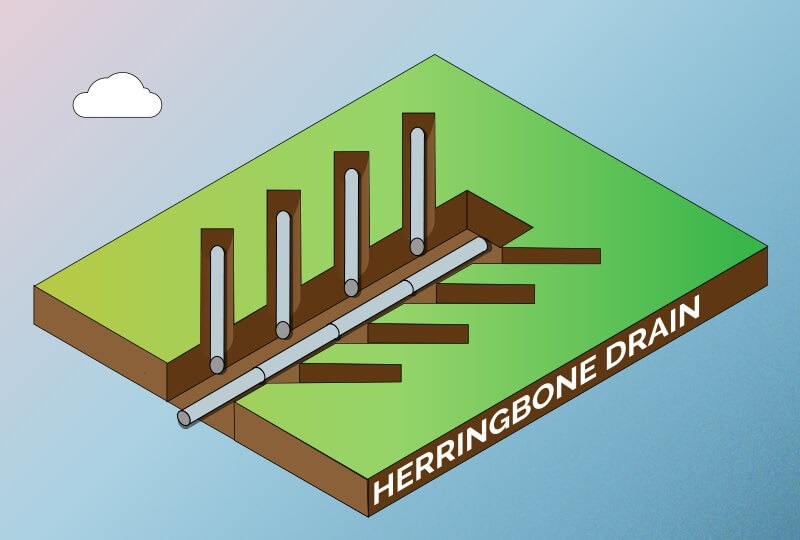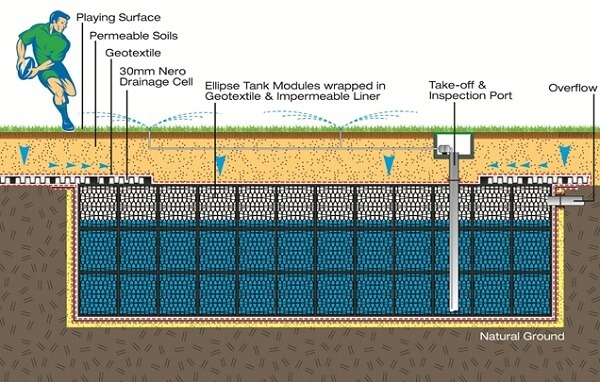5 Top Tips for an eco-friendlier & reduced school maintenance schedule
School or universities face some of the most extensive facilities maintenance schedules and often under strict budgets. We understand that budgets can be tight so maintenance plans can sometimes fall away, and it becomes more reactive approach than preventative. Using quality and robust materials can help reduce maintenance requirements over a good duration of time to help free up budget for other requirements.
Here are some of our top tips for keeping tip top facilities at a school or university:
- Keeping playing fields flood proof & eco-friendly
A regular problem for schools and universities in the damp UK climate is the playing field flooding or becoming boggy and unusable. With the technological advancements in drainage products over the years, this problem can now be quite easily and quickly rectified in a variety of ways:
- Land drains – this is a popular choice, particularly in sport stadiums. Laying land drains, typically in a herringbone pattern, drains any sitting water from the surface.
- Nero drainage cells – a very new advancement in water removal as it forms as uniform blanket or strips for sub-surface drainage under the playing area.

While these solutions will both drain water away from the surface, that water will need to be disposed of and the soil type can affect the options of disposal. Sandy or loamy soil types allow for the water to be permeated into the ground, usually via the use of soakaway crates. Clay soil will not allow for this so the water will need to go elsewhere, usually to a nearby watercourse, ditch or even the mains sewage network. It’s always worthwhile to conduct a soil percolation test to help figure out the viable options.
An eco-friendlier way to dispose of the rainwater is to reuse it. Soakaway crates can form an attenuation tank underground and essentially hold the rainwater so that it can be pumped for other uses. In this instance, the rainwater can be stored until the drier months where it can then be pumped to the sprinkler system for irrigation of the grass.

- Failing gutter systems
For such large buildings, keeping the gutter system in top shape can be a challenge and is often neglected. Before you know it, blockages can be rife throughout the system or in many situations, the gutter system may no longer be fit for purpose.
Regular visual spot checks during rain are paramount. This will quickly outline any system failings, such as leaks and highlight the exact problem areas. Keeping it clean both internally and externally every 6 months will keep ensure it reaches its lifespan as well as installing a gutter guard.
Metal gutters are always the most robust material, with cast iron gutters typically lasting up to 100 years, but without proactive maintenance their lifespan can be significantly reduced. As a rule of thumb, there should be no less than a 5-year period before a cast iron gutter system should be rubbed down and repainted to reduce rusting and ensure maximum lifespan.
PVC gutters have less lifespan but there has been a lot of technological advancements of PVC over recent years. A school that currently utilises an older, first generation PVC system will almost certainly be seeing failings today – brittle and discoloured, at least but more likely sealant failings.
Unfortunately, when a PVC gutter system begins to fail for reasons such as damage or sealant problems, it’s time to replace the system. With the enhancements in PVC, a new system if cared for correctly is guaranteed for no less than 20 years.
Make your gutter system eco-friendly with the installation of water butts to capture and store stormwater for other uses around the school grounds. This would usually be to water any planters on the premises or even plants in the classrooms.
- Replace external timber cladding and fascias with PVC
External timber cladding and fascia have exceptionally higher maintenance requirements than that of PVC.
Depending on which way the elevation is facing, this can have different effects on timber. Damp elevations are prone to causing rot whereas sun facing elevations are more likely to cause flaking and cracking paint. Keeping this material in top shape would require rubbing down and repainting, possibly even cutting out rotting timber at least every two years.
By replacing timber with PVC cladding or fascia alternatives, it is very much a ‘fit and forget’ situation – virtually maintenance free. Other than a yearly wipe to keep clean and looking fresh, there is no other maintenance to a PVC cladding or fascia alternative.
It is often misconstrued that PVC cladding or fascia comes only in white whereas they have been vastly developed in more recent years to suit tastes and décor of all types. They now come in a wide variety of colours and finishes including woodgrain effect.
- Replace school toilet, kitchen and laboratory tiling with internal PVC cladding
School toilets, kitchens or even laboratories (essentially, any rooms that contain taps) are often one of the facilities budgets blackholes. Any room that has a water supply opens itself up to a multitude of maintenance requirements, from sink and plumbing to damp and hygiene issues.
The need for robust, low-maintenance surfaces in these environments, particularly where budget can be tight, are most prevalent in schools. Internal PVC cladding has become an extremely popular choice for many reasons:
- Significantly cheaper and quicker to install than traditional tiling
- Can be fixed directly over old ceramic tiles
- Antibacterial properties prevent formation of mould
- Available in variety of colours and finishes, including woodgrain, brick, concrete and more
- Food grade hygiene cladding has exceptionally high chemical resistance and is a non-toxic PVC making it the perfect solution for laboratories or commercial kitchens.
- Grass or gravel car park maintenance
Similarly, to playing fields, school car parks that are on grass or gravel can face the same flooding issues. Failing to get surface water under control usually leads to unsightly mud tracks or gravel swept across the campus.
Permeable surfacing solutions, such as Nero Pave, will help to reduce sitting water and reduce soil/gravel erosion and migration. It also has an extremely high load bearing capacity so that cars can come and go without affecting vegetation below.
Choosing the right solution that suit your budget can be the trickiest part. However, hopefully we have helped outline more long-term solutions to keep budgets on track every year for years to come. You can always speak to one of our experts to for bespoke information to suit your facility requirements with no obligation; call on 01206 867500 or email on [email protected]


